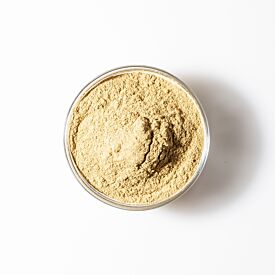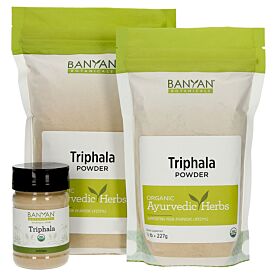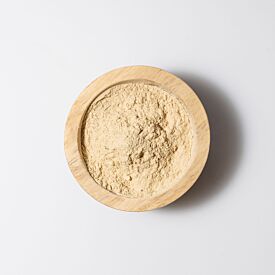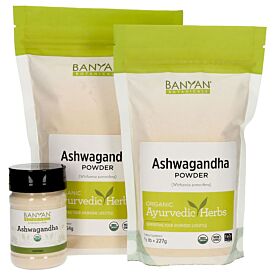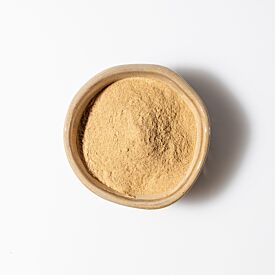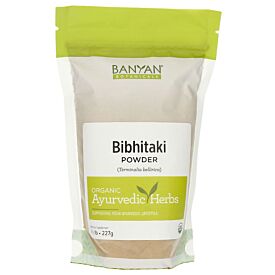Spring Rejuvenation for Vata-Kapha & Kapha-Vata

By its very nature, spring is wet, fertile, nutritive, and revitalizing. Everywhere around us, the natural world is re-emerging to embrace the sense of renewal that the spring season has to offer. Given this context, now is truly a perfect time of year to invite deep nourishment, love, and abundance into our lives. Ayurvedic rejuvenation is aimed at doing just that, and the process helps our bodies repair and revitalize on a very deep level—body, mind, and spirit. As a vata-kapha or kapha-vata type, the spring and summer months are a particularly wonderful time for you to consider a rejuvenation program because it can help to restore and revitalize both of your primary doshas just as the vata and kapha seasons draw to a close.
For those of you who recently completed (or intend to complete) a cleanse, rejuvenation is the final component of the cleanse itself. After working so hard to purify and reset your physiology, you are prepared for deep nourishment on all levels. And even if you did not do a spring cleanse, rejuvenation alone can strengthen and tone your physical, mental, and emotional spheres.
What’s An Appropriate Period of Time?
As with many things in Ayurveda, the length of an appropriate rejuvenation program varies from one person to the next. Rejuvenation therapies are typically implemented for as set period of time—usually at least one month and up to three months. While this may strike you as a long time, keep in mind that rejuvenation should feel nourishing and enjoyable to you. And, it can really be as simple as adding one practice or one herb to your daily routine.
- If you completed a full seven-day cleanse, your body will benefit from a longer period of rejuvenation (about three months), starting as soon after you complete your cleanse as possible. If that timeframe feels overwhelming to you, commit to at least one month of rejuvenation.
- If you completed a shorter cleanse, be sure to do at least one month of rejuvenation. Or, if you like, you too can rejuvenate for up to three months.
- Even if you did not complete a cleanse at all, vata-types normally benefit from a longer period of rejuvenation—about three months. However, there may be some instances where this would not be appropriate.
- If you have a known kapha imbalance (especially if it is of greater concern than any vata imbalances you may have), you’ll want to go easy on rejuvenation so as not to further aggravate kapha.
- Similarly, if you have a lot of toxicity in your system, which can be identified by a thick coating on the tongue, you’ll want to keep your rejuvenation routine very simple so that you don’t inadvertently nourish the toxins.
- In either case, a simple rejuvenation program (of one to three therapies) for about a month is probably sufficient—and it might be helpful to think about choosing therapies because they are seasonally appropriate and vata-pacifying rather than focusing on their rejuvenative properties. You could also favor kapha-type rejuvenatives, which are lighter and less likely to aggravate either of the above conditions.
Pathways Toward Rejuvenation
What follows is a list of many possible rejuvenative therapies. Please don’t feel overwhelmed. The idea is not to do all of these things, but to pick and choose those recipes and practices that most resonate with you. As you consider each therapy, remember that your rejuvenation process needs to feel beneficial. It should not add stress to your life but should instead add a sense of vitality, groundedness, contentment, and joy. If several possibilities peak your interest, consider starting with one to three therapies and then gradually expand your repertoire of rejuvenatives only if and when it feels appropriate.
Dietary Rejuvenatives
At the most fundamental level, a healthy, balanced diet supports deep rejuvenation. All of your tissues, organs, and systems draw directly from the nourishment contained within the food you eat every day. A diet primarily composed of freshly cooked, whole foods is quite rejuvenative. On the other hand, processed foods and old, stale foods have little life-force, are difficult to digest, and often contain toxins. As a vata-kapha or kapha-vata type in the midst of kapha-season, focus on eating a healthy and balanced kapha-balancing diet, being careful not to aggravate vata in the process. Eating cooked foods over raw choices can be very helpful in this respect. You can compliment these broad strokes with some especially rejuvenative foods:
-
Almonds, Soaked and Peeled
Soaked almonds are very grounding, nourishing, and energizing. Soaking and peeling them makes them more digestible and more beneficial to the body. As such, almonds are a highly revered rejuvenative in Ayurveda. -
Soaked Cashews
Cashews—which are oily, nutritive, and building—can also be used in a rejuvenation program. They actually share many qualities with soaked almonds, including the fact that soaking them makes them more digestible. -
Dark Grapes, Plums, and Peaches
These fruits are especially rejuvenative for kapha and will be a good addition to your rejuvenation program, especially if you’re particularly prone to kapha imbalances. -
Rejuvenative Almond Milk
This very restorative drink provides another delicious way to ingest soaked and peeled almonds. You can cook with it or drink it plain. It is especially useful in fall and winter, or after a period of major exertion. -
Dr. Lad’s Date & Almond Shake
This shake is a warm, nourishing, and deliciously sweet breakfast or snack. It is very nutritious, grounding, and the dates, soaked almonds, and milk make it an excellent rejuvenative. -
Alakananda Ma’s Non-Dairy Ojas Drink
This restorative almond drink is lighter and more subtle than the date and almond shake and is a nice spring and summer rejuvenative. Ingredients like soaked almonds, rose petals, ghee, and saffron make it a potent rejuvenative. -
Dream Date Balls
A very good and sumptuous rejuvenative. In ancient India, these would have been considered an aphrodisiac of sorts. Very yummy. -
Saffron Asparagus Kitchari
This light and subtle tridoshic dish is filled with nourishing ingredients that are perfect for spring and summer periods of rejuvenation. Originally designed to tonify the reproductive system, it is especially useful for promoting fertility, virility, and menstrual health. -
Rejuvenating Red Dal
A perfectly rejuvenating, nourishing, and delicious springtime meal, your body will thank you for this creamy and warming red dal.

Rejuvenative Herbs
There are many different types of rejuvenating herbs—each with a distinct purpose. The most widely used Ayurvedic rejuvenatives work simultaneously on all of the body’s tissues. Below are several herbal rejuvenatives well suited for your constitution and for the fall and winter seasons. Taking these herbs and formulas with a catalytic agent such as ghee, honey, or ginger tea helps to deliver the benefits deep into the tissues, increasing the potency and efficacy of the herbs. Instructions for using each of these specifically as a rejuvenative are provided, but if you prefer to take your herbs in water or without ghee and honey, they will still be beneficial.
- Triphala With Ghee and Honey—Triphala is a tridoshic formula that naturally rejuvenates all of the tissues in the body (while encouraging the elimination of toxins). It is an especially potent rejuvenative when taken with ghee and honey—usually first thing in the morning. Mix ½ teaspoon of powdered triphala with ½ teaspoon of ghee and ½ teaspoon of raw honey. Or, if powdered herbs aren’t your thing, take one triphala herbal tablet, followed by a mixture of ½ teaspoon ghee and ½ teaspoon raw honey
-
Choose One: Healthy Kapha or Healthy Vata
- Healthy Kapha—This warming and astringent formula is designed to restore and maintain balanced kapha, without aggravating vata or pitta. In particular, Healthy Kapha supports a clear respiratory system, a robust immune system, and helps support the maintenance of a healthy weight. Healthy Kapha is an excellent formula for the winter and spring seasons, when the cool, wet weather tends to disturb kapha. If you are doing a longer rejuvenation program, you might consider switching from Healthy Kapha to Healthy Pitta in the late spring or summer—whenever the weather heats up enough to make balancing pitta a higher priority. Take one to two Healthy Kapha Tablets, once or twice daily, or as directed by your health practitioner.
- Healthy Vata—This rejuvenating blend of herbs is specifically formulated to restore and maintain balanced vata, without aggravating pitta or kapha. The herbs in this formula promote energy and vitality while supporting overall health and well-being. If you are doing a longer rejuvenation program, you might consider switching from Healthy Kapha to Healthy Pitta in the late spring or summer—whenever the weather heats up enough to make balancing pitta a higher priority. Whichever you choose, take one to two tablets, once or twice daily, or as directed by your health practitioner.
- Chyavanprash—Chyavanprash is a delicious nutritive jam. It is an ancient herbal formula that includes ghee and honey—both of which help to deliver the herbs to the tissues. Chyavanprash can be taken alone, it can be stirred into milk or water, or it can be spread on toast, bread, or crackers—like any other jam. Taking chyavanprash in warm milk (or almond milk, if dairy is not appropriate) helps to carry its tonifying and rejuvenating qualities deep into the tissues. As a rejuvenative, chyavanprash is typically taken in the morning, or sometimes in both the morning and the evening. Take 1–2 teaspoons once or twice daily, or as directed by your health practitioner.
- Ashwagandha—Ashwagandha is a highly esteemed herb that promotes strength, energy, and vitality. It supports one’s ability to handle stress, bolsters physical strength, rejuvenates the tissues, and supports sound sleep at night. A typical rejuvenative dose would be ½ teaspoon powdered ashwagandha in the morning, in ½ teaspoon ghee and ½ teaspoon raw honey. Or, if you would prefer a tablet, take one ashwagandha herbal tablet, followed by a mixture of ½ teaspoon ghee and ½ teaspoon raw honey.
- Bibhitaki—Bibhitaki is one of three ingredients in the famous Ayurvedic formula, triphala, but it is particularly calming to kapha. If your primary imbalance relates to kapha, you could use bibhitaki in place of triphala, but in a similar manner—taking ½ teaspoon of powdered bibhitaki with ½ teaspoon ghee and ½ teaspoon honey in the morning.
- Amla—Amla, also known as amalaki, is another one of the three ingredients in the famous Ayurvedic formula, triphala, but it is particularly calming to pitta. If your primary imbalance relates to pitta, you could use amla in place of triphala, but in a similar manner. Either take ½ teaspoon of powdered amalaki with ½ teaspoon ghee and ½ teaspoon honey in the morning, or take one amla tablet followed by a mixture of ½ teaspoon ghee and ½ teaspoon honey.
-
Choose One: Kapha Digest or Vata Digest
- Kapha Digest—This formula is designed to kindle a strong digestive fire while burning away fat and natural toxins. And since proper digestion is essential to effective rejuvenation, these tablets can truly enhance your rejuvenation experience. This formula simultaneously rejuvenates the lungs and supports clear and healthy respiratory channels. Take one to two Kapha Digest tablets, once or twice daily, or as directed by your healthcare practitioner.
- Vata Digest—This formula is heating, grounding, and oily and is very supportive of proper digestion in vata-types. Whether you’re in the rejuvenation phase following a cleanse or you’re simply trying to redirect your body’s tendency toward vata-type digestive issues, this formula is fabulous. And since proper digestion is a cornerstone of effective rejuvenation, these tablets can truly enhance your rejuvenation experience. Take one to two Vata Digest tablets, once or twice daily, or as directed by your healthcare practitioner.
Rejuvenating Practices
Not surprisingly, your lifestyle has a profound impact on your body’s ability to repair, regenerate, and revitalize itself. When we fill our days—particularly our mornings—with calming, nurturing practices that set a tone of health, relaxation, and self-love, our bodies are much better able to nurture the rejuvenation process.
Simple Lifestyle Adjustments to Support Rejuvenation
- Minimize stress
- Maintain positive relationships
- Avoid melancholic or depressing situations
- Be mindful of reducing any tendency toward judgment, criticism, or a need to be in control
- Cultivate creativity and flexibility in your life, letting go of your attachment to perfection
- Practice forgiveness toward your self and others
- Undertake a period of celibacy to preserve your vital life energy
In addition to any of the above commitments that appeal to you, you can incorporate some more formal practices to invite rejuvenation on a very deep level.
- Abhyanga (Ayurvedic Oil Massage)—Each morning, before a shower or bath, massage about ¼ cup warm Kapha Massage Oil or Pitta Massage Oil into the skin. This practice calms, lubricates and rejuvenates the tissues—in particular, the nervous system. For further instructions on this rejuvenating technique, click here.
- Oil the Soles of Your Feet Before Sleep—Before bed, apply some warm Kapha Massage Oil, Pitta Massage Oil, or Organic Sesame Oil to the soles of your feet. This practice grounds the energy, soothes the nervous system, reduces stress, and quiets the mind—all of which support sound sleep. Remember that sleep is one of the body’s most essential avenues of rejuvenation—get enough of it to soothe pitta without overindulging kapha.
- Nasya—Each morning (or at least several times per week) apply 3–5 drops of Nasya Oil into each nostril. This practice helps to soothe the nasal passages while promoting unobstructed breathing, relieving accumulated stress, supporting mental clarity and fostering the unfolding of awareness.
- Yoga—Kapha-balancing yoga, which is active and invigorating is the best rejuvenative practice for kapha-types, especially as you move deeper into the winter and spring. However, incorporating restorative postures such as legs up the wall and corpse pose with a bolster opening the chest will be equally beneficial this fall and winter.
- Meditation, Pranayama, Quiet Time, and/or Reflective Time—Any quiet, contemplative practice—even if it is only five to fifteen minutes in duration—is incredibly rejuvenative to the mind and physiology. Practicing in the early morning hours, especially before and around dawn, is powerfully supportive of rejuvenation.
Rejuvenative Products to Consider
- Powdered Triphala or Triphala Herbal Tablets
- Healthy Kapha or Healthy Pitta Tablets
- Kapha Digest or Pitta Digest Tablets
- Chyavanprash
- Powdered Ashwagandha or Ashwagandha Herbal Tablets
- Powdered Amalaki or Amalaki Herbal Tablets
- Powdered Bibhitaki
- Organic Ghee
- Kapha Massage Oil, Pitta Massage Oil, and Organic Sesame Oil
- Nasya Oil



